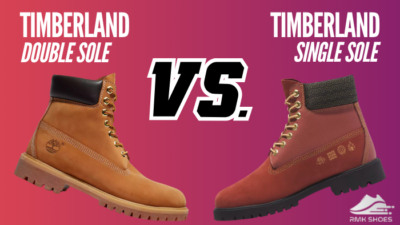Having pounded pavement in the UltraBoost 21 and SolarBoost 3, I’m eager to dissect their differences and declare a champion.
While they boast the legendary Boost cushioning for explosive energy return and a smooth ride, my miles reveal subtle distinctions in their personalities.
However, their design and technology create distinct personalities.
In this comprehensive comparison, I’ll discuss every detail, from the innovative midsoles to the precise engineering of the uppers and more.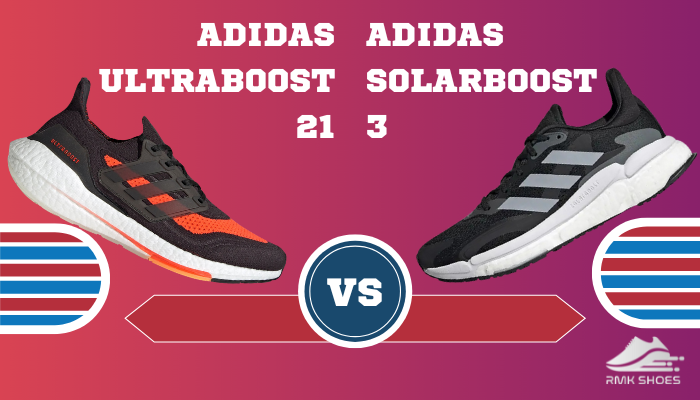
So. let’s begin and grab the ideal pair.
Overview of Adidas UltraBoost 21 and Adidas SolarBoost 3
Adidas has a vast collection of running shoes at its disposal, and almost every one of the series has proper recognition among runners.
Following that, the UltraBoost 21 and SolarBoost 3 provide exceptional performance.
Now, take a closer look at what they offer.
Adidas UltraBoost 21
Adidas released the UltraBoost in 2015, and the 21st iteration was released in 2021.
With the new iteration of the models, Ultraboost is becoming more prominent in the runner community.
The UltraBoost 21 reigns supreme for those prioritizing comfort and a luxurious ride.
Its plush Boost midsole and Primeknit upper offer an almost pillowy experience, ideal for long runs, recovery days, and casual wear.
Additionally, the Torsion System provides subtle stability, making it suitable for runners seeking a smooth and secure stride.
Adidas SolarBoost 3
SolarBoost, on the other hand, was launched in 2018, and the model embodies a more performance-oriented approach.
While boasting a comfortable Boost midsole, it incorporates a firmer density for more excellent responsiveness. Its engineered mesh upper provides a secure and breathable fit, while the supportive midfoot cage adds an extra layer of stability.
This combination makes the SolarBoost 3 a compelling choice for tempo runs, interval training, and runners seeking a balance between comfort and performance.
That said, now check their difference with an informative table, and then I will jump into the more detailed section.
Attribute Comparison: Adidas UltraBoost 21 and SolarBoost 3
Adidas UltraBoost 21 is more comfortable, whereas the SolarBoost 3 is more performance-oriented.
That said, they both are exceptional running shoes used by many individuals.
Here is a comparison table for Adidas UltraBoost 21 and SolarBoost 3:
| Attributes | Adidas UltraBoost 21 | Adidas SolarBoost 3 |
|---|---|---|
| Focus | Comfort & Luxury | Performance & Responsiveness |
| Cushioning | Plush Boost midsole for a pillowy feel | Firmer density Boost midsole for greater energy return |
| Upper | Primeknit upper for a sock-like and breathable fit | Stretchy knit mesh upper for a secure fit, 50% recycled material |
| Outsole | Stretch web Continental outsole | Stretch web Continental outsole |
| Midsole drop | 10mm | 10mm |
| Heel Stack height | 30.5mm | 32mm |
| Forefoot Stack height | 20.5mm | 22mm |
| Weight | 10.9 ounces | 10.7 ounces |
| Best Use case | Long runs, recovery days, casual wear | Tempo runs, interval training, performance use |
| Design | More streamlined and modern | More classic and athletic |
Now, scroll down to the section below, where I discuss the core differences that will help you choose the perfect pair.
Primary Differences Among Adidas UltraBoost 21 and Adidas SolarBoost 3
When it comes to picking the perfect pair of running shoes, two of the most popular options are the Adidas UltraBoost 21 and the Adidas SolarBoost 3.
Both shoes are highly rated for their comfort, performance, and style.
However, some critical differences between the two may be significant for your decision-making process.
Here are the main differences between Adidas UltraBoost 21 and SolarBoost 3:
1. Upper Material and Design
UltraBoost 21 uses Primeknit material, which wraps your foot in a sock-like embrace, providing a plush and adaptable fit.
When I tried the UltraBoost 21, I first noticed the soft textured feel.
UltraBoost also has a streamlined, modern design that prioritizes style with bold color options.
Meanwhile, the SolarBoost 3’s upper exudes performance. Its Stretchy knit mesh upper ensures a secure and supportive fit, ideal for pushing your limits.
In addition to using 50% recycled materials, the SolarBoost’s Primegreen upper eliminates virgin plastics in the mesh, making it a more environmentally conscious choice.
That said, both shoes provide ample padding on the upper heel portion.
Ultimately, the upper material of the UltraBoost 21 is softer and has better quality than the SolarBoost 3.
2. Midsole & Outsole
Midsole
Both shoes feature Boost, providing a comfortable ride and impact protection.
UltraBoost 21’s plush Boost midsole delivers unparalleled comfort and shock absorption, ideal for long runs and recovery days.
I find the UltraBoost 21’s midsole is soft and bouncy, supporting the running course.
But it also feels mushy sometimes.
Also, I encountered that the UltraBoost 21 offers moderate energy return for a smooth and effortless stride.
SolarBoost 3, on the other hand, uses a firmer density Boost midsole that prioritizes responsiveness. The midsole offers a springy feel and propels you forward during tempo runs and interval training.
In my perspective, the SolarBoost 3 delivers a dynamic and energetic feel that pushes me to my limits.
Outsole
The outsole of Adidas UltraBoost 21 and SolarBoost 3 are made of Continental rubber, a durable and grippy material that works well on various surfaces.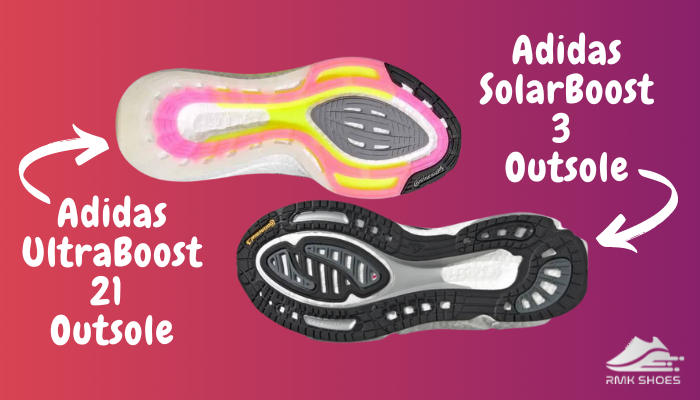
However, there are some differences in the design and performance of the outsole of each shoe.
The UltraBoost 21 uses a Stretchweb outsole with strategically placed grooves, providing flexibility and adaptability for a smooth and comfortable ride. Also, its adaptive rubber helps my foot move naturally. Once I start the run, it becomes more rhythmic.
The UltraBoost 21 features a waffle-like pattern on the outsole that aids in gripping the pavement.
The outsole also has a crystal rubber heel, a transparent and hard rubber that adds durability and protection to the heel area.
The SolarBoost 3 has a similar Continental rubber outsole but more aggressive lugs for improved grip on various terrains.
Also, the outsole has a flex grid pattern that provides traction and flexibility.
Another thing I love about the outsole of SolarBoost 3 is that it has a Solar Propulsion rail, a rubber strip that runs along the medial side of the shoe.
Also, the SolarBoost 3 has a more advanced LEP torsion system, providing better torsional support.
As you can see, both Adidas UltraBoost 21 and SolarBoost 3 have similar outsoles with some key differences.
Overall, I get better support from the sole of Adidas UltraBoost 21 in my long runs.
3. Cushioning and Breathability
From the get-go, I found that the UltraBoost 21 and SolerBoost 3 both run a bit hot over long distances.
Both materials and their placement are great for foot containment with proper cushioning.
Moving to the UltraBoost 21, the entire upper is made up of Primeknit, which is stretchy and breathable. Also, its softer midsole and outsole provide enough padding.
In contrast, the upper material of the SolarBoost provides marginal breathability. It’s a bit harsher than its competitor.
It has a stiffer midsole and outsole than the UltraBoost 21 for providing better performance.
I find the cushioning and breathability of the UltraBoost 21 is superior.
4. Tongue Style
The UltraBoost 21 has a thin, flat tongue attached to the upper on both sides, creating a bootie-like construction.
The tongue is made of the same Primeknit material as the rest of the upper and has a small loop on the top to help put on the shoe.
Also, the tongue feels smooth and soft on my foot and does not cause any pressure or irritation.
Meanwhile, the SolarBoost 3 has a thick and padded tongue detached from the upper, allowing for more adjustability and customization.
The tongue is made of a synthetic material slightly stiffer than the Stretchy mesh of the upper and has a large tab on the top. The tongue feels comfortable and snug on the foot, providing extra cushioning and protection.
The tongue of SolarBoost 3 offers better support and cushioning.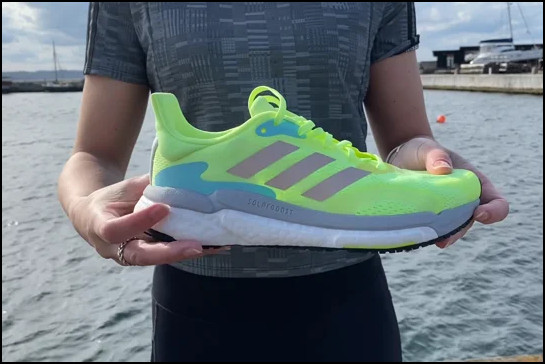
5. Stability and Traction
In the area of stability and traction, both shoes are top-notch, but they each take a different approach.
The UltraBoost 21 has a redesigned torsion system that enhances the propulsion and responsiveness of the shoe. Also, it has a transparent heel counter that adds a touch of flair and support to the heel area.
However, with all these options, I still found the show slightly unstable, just on the multidirectional movement. I think it’s for the extra softness of the shoes.
Meanwhile, the SolarBoost 3’s three-piece midsole with the Boost foam and control rail offers excellent stability.
Its molded heel counter adds stability and comfort to the heel area.
In addition, both shoes feature a Stretchweb Continental outsole, a durable and grippy rubber that performs well on various surfaces.
The Ultraboost 21 has a waffle-like pattern that provides traction.
The shoe also has a crystal rubber heel, a hard rubber that adds durability and protection to the heel area.
On the other hand, SolarBoost 3 has a more sturdy and sticky rubber and a flex grid pattern that provides traction and flexibility.
The SolarBoost 3 has better stability and traction than the UltraBoost 21, which may be because it is not as cushioned or spongy as the UB 21.
6. Size and Fit
The UltraBoost 21 and the SolarBoost 3 have similar sizes and are both true to size.
| Shoe | Sizing | Notes |
|---|---|---|
| UltraBoost 21 | Runs slightly true to size for men and tends to run slightly narrow for women. | Consider sizing down 0.5 sizes for a snuggly fit |
| SolarBoost 3 | Runs true to size for men and women. | Fit’s perfectly |
Despite having the same size, I discovered that my UltraBoost 21s are slightly bigger.
I had to go down half a size to get a proper fit, and even then, I had some wiggle room.
That said, the SolarBoost 3 runs true to size and fits perfectly in my foot.
In fit and finish, the UltraBoost 21 and the SolarBoost 3 have different fits, as they have different upper materials and constructions.
UltraBoost 21 has a stretchy and breathable Primeknit upper, which adapts to the foot shape and provides a sock-like fit.
On the other hand, the SolarBoost 3 has a comfortable and secure engineered mesh upper, ensuring a supportive lockdown fit.
So, for a cushiony feel, choose the UltraBoost 21, and for a more secure fit, choose the SolarBoost 3, but you will sacrifice some comfort.
7. Performance and Durability
Now, let’s talk about performance, as that is what we are looking for in these shoes.
I liked the energy return of the UltraBoost 21 from their thick and responsive Boost midsole.
It also has a redesigned torsion system that enhances the propulsion and responsiveness of the shoe.
The shoe provided a lot of cushioning but not enough arch support for my feet. It also has a redesigned torsion system that enhances the propulsion and responsiveness of the shoe.
This shoe is ideal for runners who want a peppy and cushioned ride.
However, it is also a bit heavy and not very stable, especially for overpronators or runners who need more arch support.
This may be due to the shoe’s overall design, which is meant to be more comfortable than supportive.
In contrast, when I try the SolerBoost 3, it feels like an extension of my foot. I can push off anytime, and the linear Energy Push propels me.
The shoe is ideal for runners who want a steady and stable ride but is also heavy and not very flexible, especially for runners who want more natural movement or a faster pace.
That said, both shoes have durable upper material, midsole, and outsole.
Fundamentally, the UltraBoost 3 might be ahead cause of its premium materials in some portion.
The Adidas UltraBoost 21 and SolarBoost 3 really provide superior performance with their distinct characteristics.
Finally UltraBoost 21 shoe is ideal for runners who want a peppy and cushioned ride with superior energy return, and SolarBoost 3 is better for performance runs and training.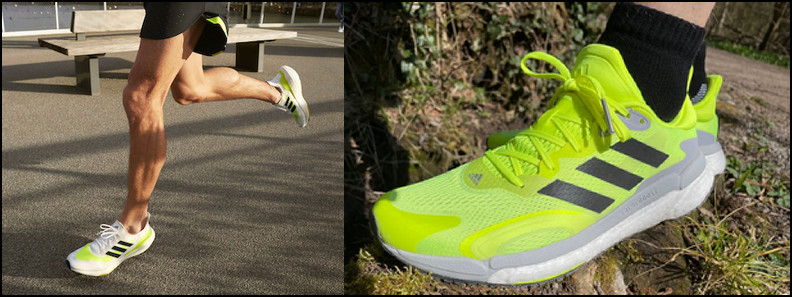
Pros and Cons of Adidas UltraBoost 21 and SolarBoost 3
The Adidas UltraBoost 21 and the Adidas SolarBoost 3 are excellent running shoes, but in which area do they show excellence, or what are their weak points?
Here is a comparison of the pros and cons of each shoe to help you decide which one is right for you:
Adidas UltraBoost 21
- »Extremely comfortable.
- »Excellent cushioning.
- »Good energy return.
- »Supportive in the long run.
- »Expensive than SolarBoost 3.
Adidas SolarBoost 3
- »More affordable than the UltraBoost 21.
- »Lighter than the UltraBoost 21.
- »More breathable than the UltraBoost 21.
- »Good cushioning.
- »Good energy return.
- »Supportive in fast-paced runs.
- »Not comfortable.
Which One Should You Pick? Adidas UltraBoost 21 or SolarBoost 3?
It’s not easy to choose the best running shoes from the Adidas UltraBoost 21 and the SolarBoost 3. Both leverage the iconic Boost technology, delivering unparalleled comfort and energy return.
However, if you look closely, they offer some distinct characteristics and cater to slightly different needs.
The UltraBoost 21 provides a plush, cushioned feel for your feet.
Its iconic Boost midsole cradles you on long runs, making every step feel effortless.
However, don’t expect this shoe to be a speed demon. Its softer nature is better suited for easy runs and recovery days.
Meanwhile, SolarBoost 3 is all about pushing the pace.
The firmer Boost midsole and Propulsion Plate provide a snappy response, ideal for tempo runs and mixed terrain.
It’s not as marshmallowy as the UltraBoost, but the grip from the Stretchweb outsole keeps you confident on any surface.
Ultimately, the champion depends on your priorities.
Also, if you consider budget, the UltraBoost 21 comes at a premium price of around 180 $, whereas you can get SolarBoost 3 at around 160 $.
Overall, the UltraBoost 21 is a better choice for runners prioritizing comfort and support, while the SolarBoost 3 is better for runners prioritizing energy return and responsiveness.
FAQs
What is the Boost technology of Adidas?
Boost is a revolutionary midsole technology developed by Adidas. It comprises thousands of tiny, closed-cell thermoplastic polyurethane (TPU) particles. These soft, responsive pellets compress and rebound with each step.
Is UltraBoost 21 good for the gym?
The UltraBoost 21 is not ideal for gym use. Its softness might feel unstable for lifting and lack responsiveness for explosive exercise.
What type of shoe is Adidas SolarBoost 3?
SolarBoost 3 is a versatile performance running shoe. It has balanced cushioning, stability, and reliable grip for various terrains and paces. Best for tempo runs, mixed trails, and race training.


